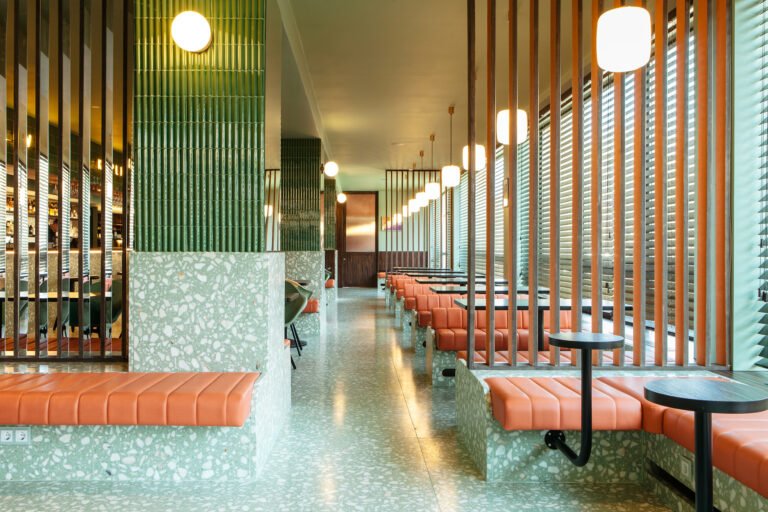713 Bucarest // Atelier Quinze Vingts
[ad_1]
Text description provided by the architects.
The elevation of an existing building is a response to the problem of urban densification. Expanding existing housing or offices, without impacting their ground surface and thus the footprint on the city, allows for urban sprawl to be contained. The act of building the city not only within the city but also above the city also gives rise to punctual and specific initiatives that create a heterogenous skyline.

© Atelier Quinze Vingts

© Atelier Quinze Vingts
The Parisian urban fabric is above all known for its quite homogenous Haussmannian buildings and its zinc roofs. At the time, the use of zinc in roofing, a light and easy-to-handle material, made it possible for the height of the roofs to be increased and give more room to the tenants.

© Atelier Quinze Vingts

© Atelier Quinze Vingts
However, these so-called “Mansard-roofs” are quite complex to heighten because of their diversity of forms and frameworks.
The Heightening architecture project of Atelier Quinze Vingts, adopts three fundamental principles that have shaped and guided the conception and construction of the project: context / feasibility / economy of means.
The need is as follows: the client wants to increase its office space.

© Atelier Quinze Vingts

© Atelier Quinze Vingts
The existing height of the building and the adjoining building, higher by about ten meters, let us consider adding an extra floor.
The flat roof on which we consider building is the main asset. The existing office building has a clear structural grid of full and empty parts, that will define the architectural design.
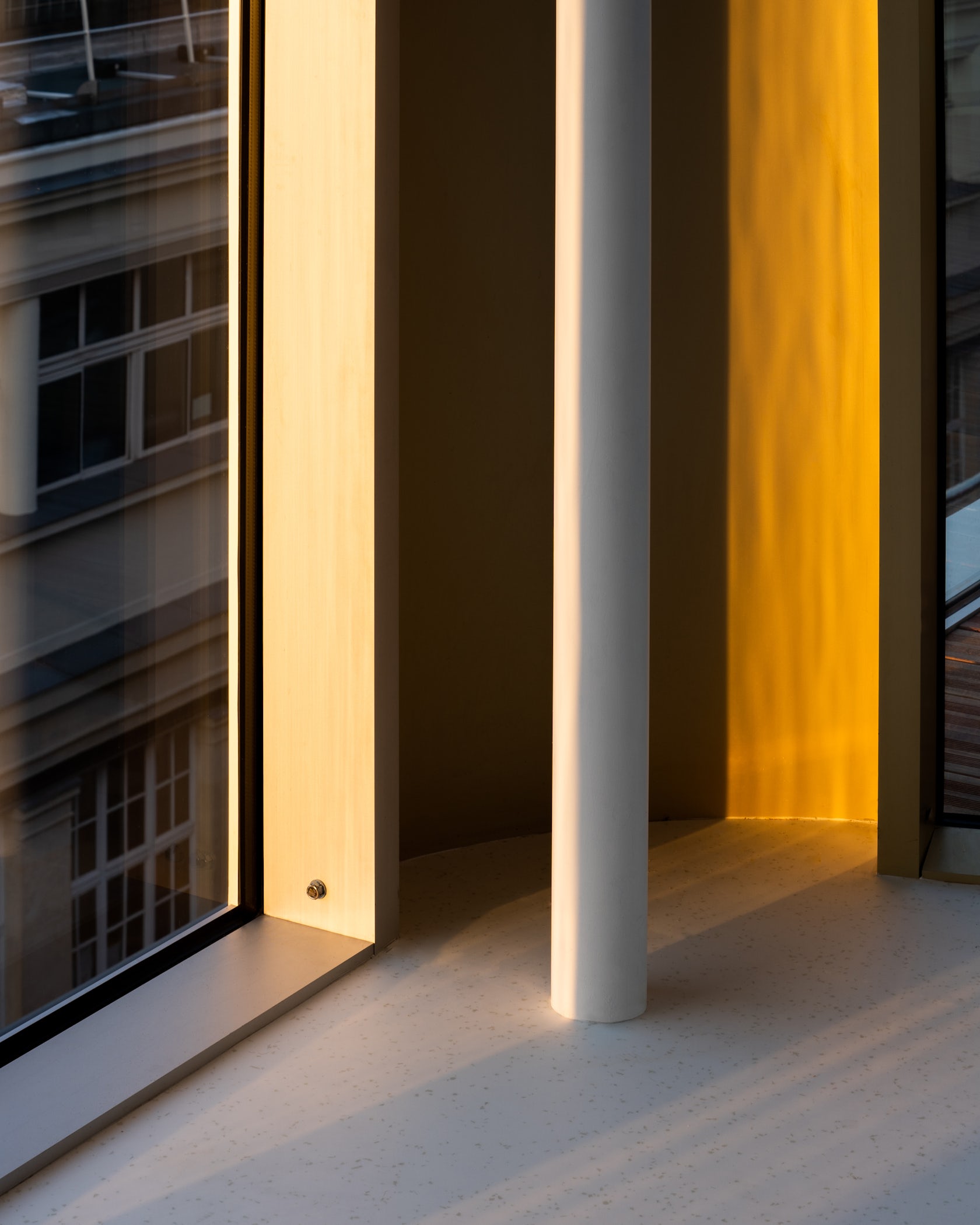
© Atelier Quinze Vingts
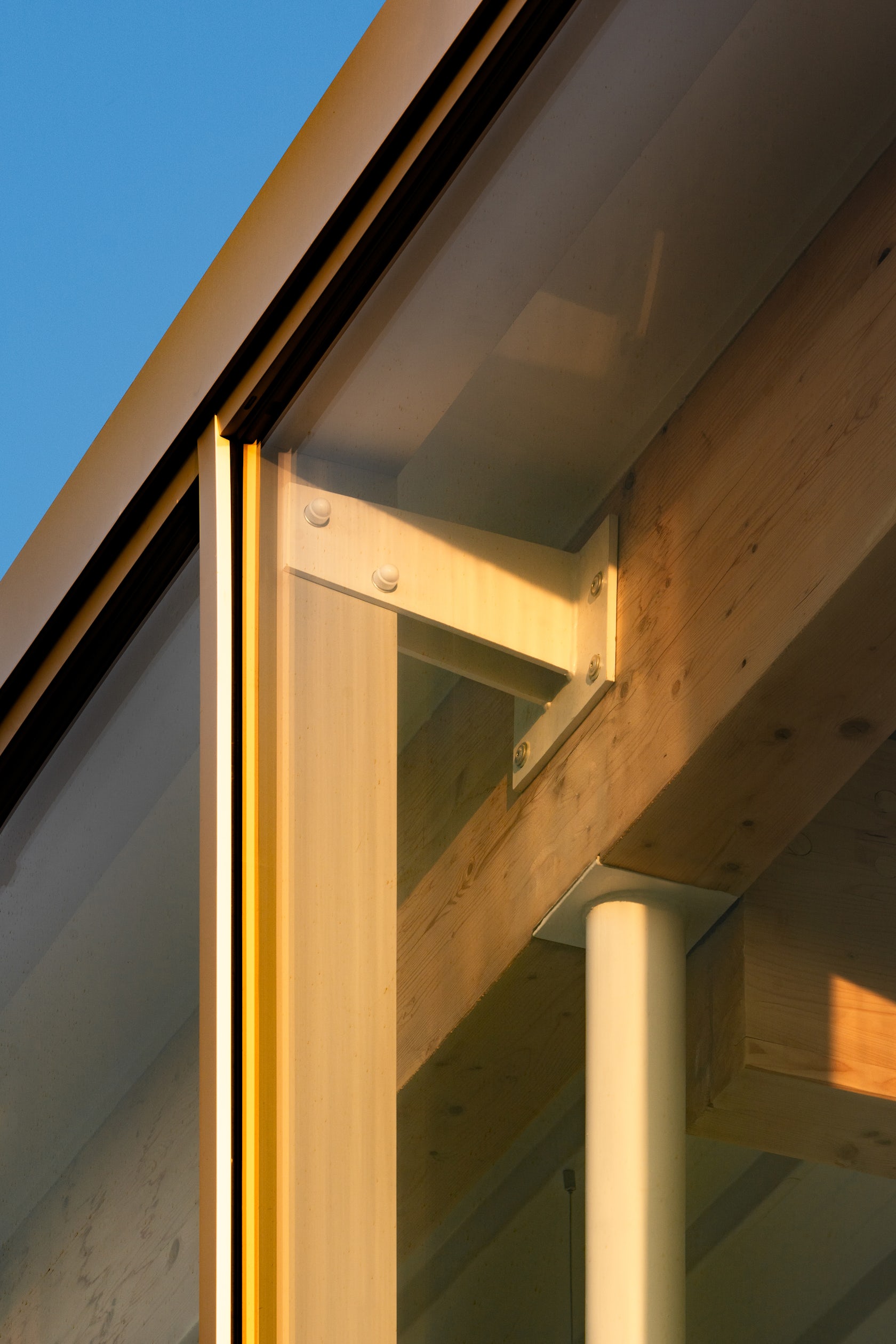
© Atelier Quinze Vingts
In order to control the additional load distribution, it serves as a basis for the project, for both the aesthetic of the facades and the future structure. The existing attic flat roof has a dominant position over the surrounding roofscape and offers multiple points of view on the capital city.
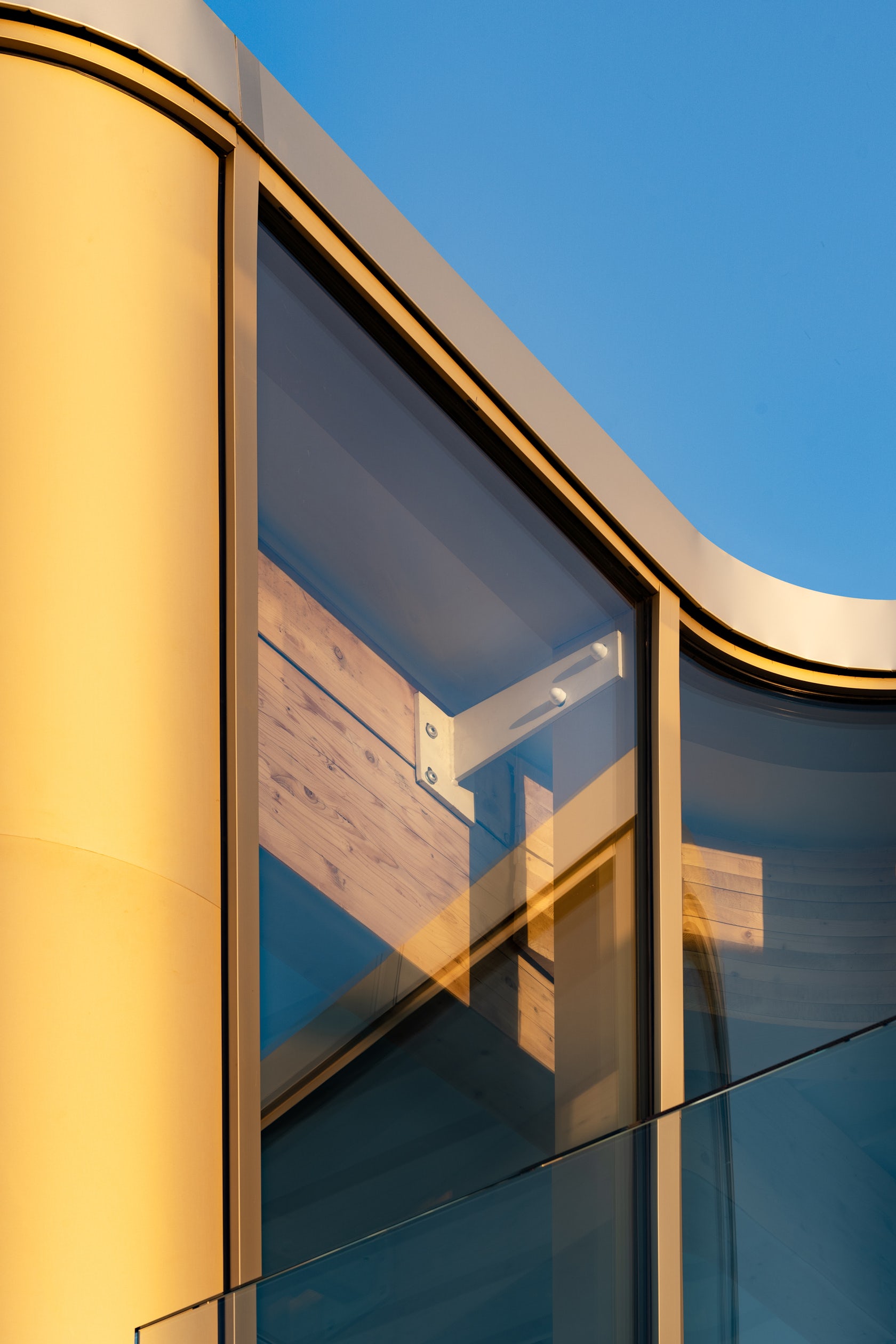
© Atelier Quinze Vingts

© Atelier Quinze Vingts
Therefore, it was an obvious choice to deal with transparency and perspective, by creating full height glass curtain walls on the north and south facades. These correspond to the existing 1.80m grid of the building and are 3.40m high in order to draw in a maximum of light and exteriority.

© Atelier Quinze Vingts

© Atelier Quinze Vingts
The alternation of transparent and opalescent glass breaks the existing regularity. Also, a terrace on each side opens up the linear facades.
The construction principle is simple: it is based on iron columns placed at the periphery of the open-space and a laminated timber framework, which guarantees full flexibility of the space.

© Atelier Quinze Vingts

© Atelier Quinze Vingts
The entire construction is strictly referring to the existing grid. The glazing units, the columns and beams are prefabricated in a nearby factory. The optimization of each element and its dimensioning makes it easier to transport and assemble. It reduces the working time on the construction site, which is an important criteria in dense urban sites.
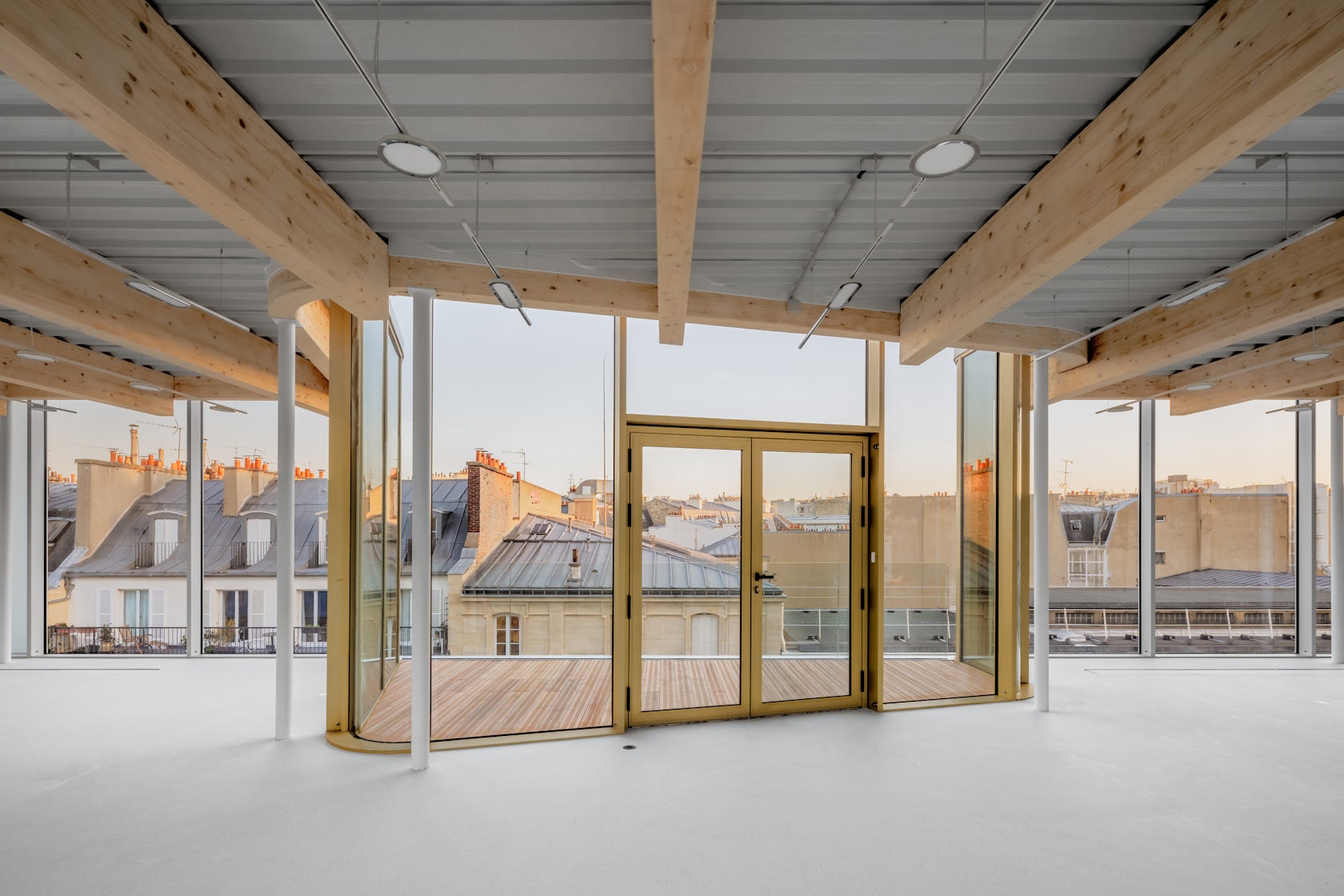
© Atelier Quinze Vingts

© Atelier Quinze Vingts
For instance, the heightening of this building rue de Bucarest took only three months on site work, to finish the structural work and enclosure.
The major beam in periphery is identical in every way to the perpendicular beams that hold the steel decks. It is simply placed upwards to create the flat roof parapet, in order to avoid any complementary material.

© Atelier Quinze Vingts

© Atelier Quinze Vingts
Concealed beam hanger brackets were used with tiny wood plugs to hide bolt heads, to simplify the visual aspect of the assembly of the wooden structure. The iron decks supporting the watertight complex of the roof and the steel brackets holding the curtain wall are deliberately visible as well as the laminated timber framework.
All the elements that make up the building system are therefore the result of architectural choices that make sense in terms of economy of means, costs and time, participating in this desire to reduce the energy and environmental impact of the construction, in line with the principle of heightening mentioned above..

© Atelier Quinze Vingts
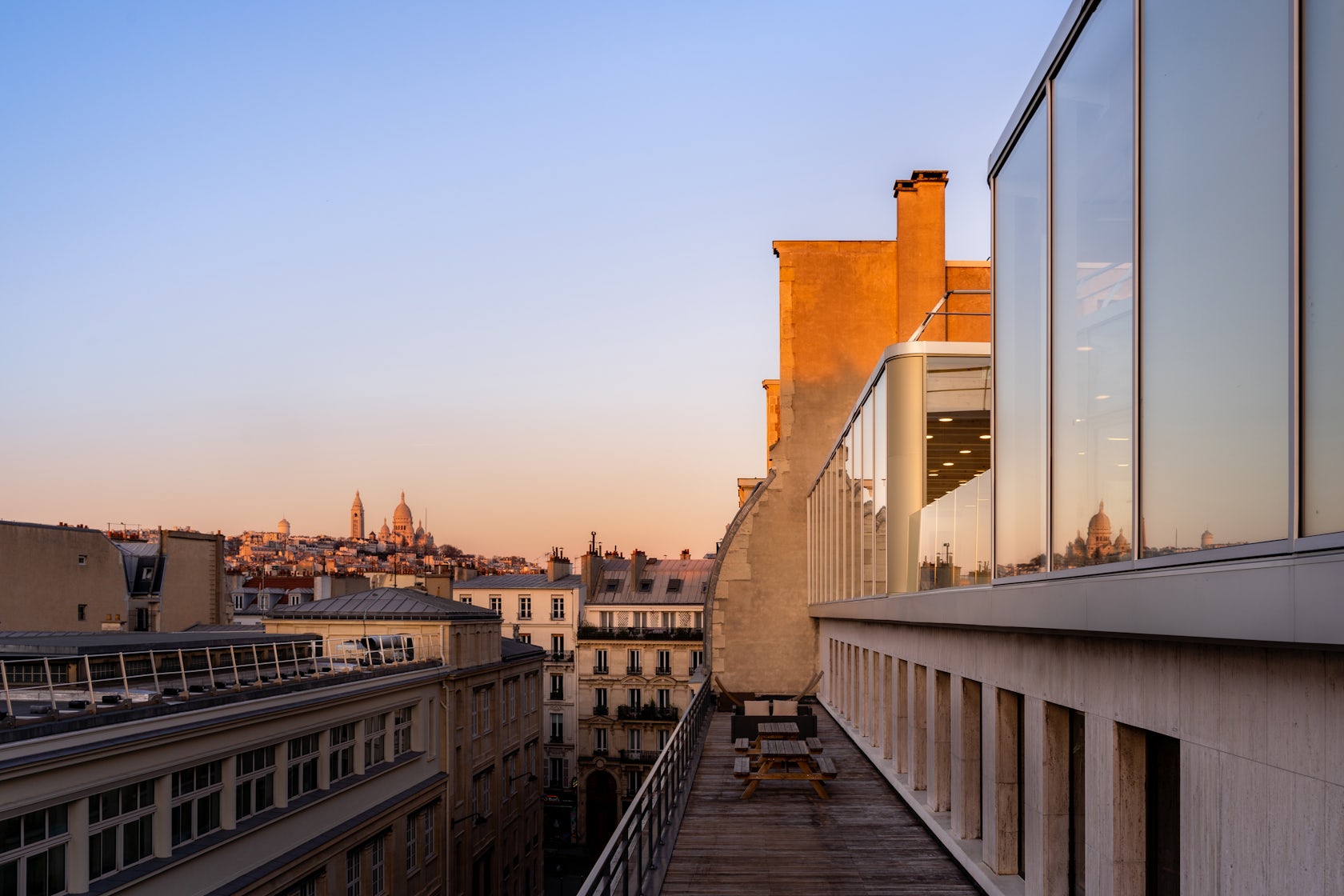
© Atelier Quinze Vingts
713 Bucarest Gallery
[ad_2]
Source link


